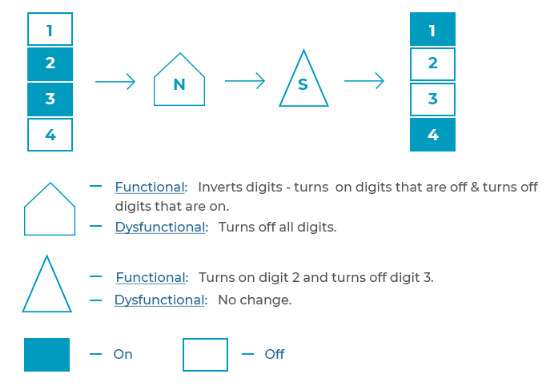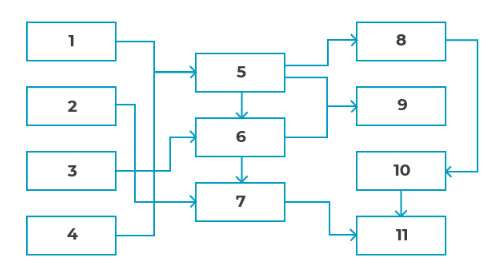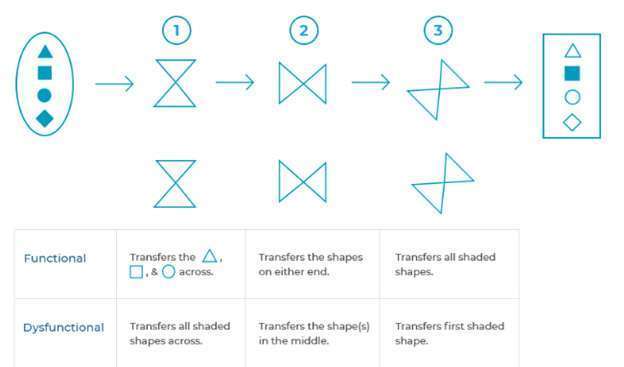
This post provides detailed information, facts, and tips on fault diagnosis tests that you may be required to take if you are seeking a technical job position, such as electronic, electrical, or mechanical role; including practice questions and answers you can use to effectively prepare for the test.
Please, read on:
You might be asked to take a fault diagnosis test if you are going to be working with big machinery or military vehicles.
Many organizations use these pre-employment psychometric tests to screen graduates and job seekers for applicants who are most sharp-eyed and sensitive in terms of finding and correcting errors.
What is Fault Diagnosis Test?
The fault diagnosis test is an online assessment utilized in the evaluation of interested applicants.
The test helps civil engineers, security personnel, etc. with the knowledge of how to identify and quickly fix equipment.
Even though the fault diagnosis test won’t require you to possess any technical knowledge, you still need to work on your speed and accuracy.
The questions of this test are multiple-choice. You will be presented with a system of knobs, arrows, and switches and asked to identify which components are defective.
18 Important Facts about Fault Diagnosis Tests you need to Know
Here are important facts about fault diagnosis tests and tips to help you pass it:
- How do fault diagnosis tests work?
Fault diagnosis tests often contain questions that show a combination of symbols and shapes used in various switches.
You are required to work out the basic process behind the switch systems and spot errors in the system.
The abstract switches are shown in the form of a grid or a flowchart. Unlike mechanical aptitude tests, fault diagnosis tests require no previous technical knowledge.
- What do fault diagnosis tests measure?
These tests are designed to measure a candidate’s ability to diagnose faults in mechanical and electrical systems.
It requires a high level of concentration as candidates need to understand how various inputs are changed by 3 separate switches.
Fault diagnosis tests are most helpful in positions that require accuracy and a strong technical understanding. Several roles that would use fault diagnosis tests include:
- Technical roles (engineers and electricians)
- Operational roles (maintenance)
- Armed Forces roles.
- What is the purpose of a fault diagnosis test?
Examining your logical and abstract reasoning capabilities is the purpose of the fault diagnosis assessment test.
Because technicians and engineers usually encounter problems that don’t have a noticeable cause, they are likely to meet the fault diagnosis test.
In the fault diagnosis test, you need to depend on your logic and eradication process to get solutions. The questions of this test usually focus on such skill sets.
- An overview of the fault diagnosis tests
Fault diagnosis tests comprise 25 questions required to be finished in 20 minutes. The test always has two segments to each question, such as a grid that describes the function of a series of switches and a flowchart displaying input, switches, and output.
A total of 7 switches are utilized throughout the test. Each question consists of 3 switches and each switch changes the input prior to the next switch in the series.
The grid displays all the functions that each switch performs.
- Fault diagnosis questions
In the fault diagnosis test questions, you will be given a combination of diagrams utilized in switches.
You are required to determine how the switch operates and spot errors in the system.
The shapes and symbols are shown in the form of a grid or flowchart and no prior technical knowledge or experience is required.
- What type of companies use the fault diagnosis test?
Any organization or business outfit looking to employ workers for the technical or electrical fields usually utilizes fault diagnosis tests.
These roles commonly involve technical support positions, public sector positions such as civil engineers and train drivers, and IT experts.
Moreover, the majority of military establishments, defense, and security organizations make use of these tests. A well-known provider of the fault diagnosis test is CEB SHL.
- CEB SHL fault diagnosis test
In the SHL Fault Diagnosis online assessment test, you will be given 18 minutes to answer 36 questions.
You are advised to practice the CEB SHL fault diagnosis test before your test date so as to overcome the challenging questions, especially under a time constraint.
- When do I use the fault diagnosis test?
You can widely make use of the fault diagnosis test to choose technical and maintenance personnel, where the ability to tackle a problem logically and systematically to find the cause of the fault is very important.
- How much does a fault diagnosis test cost?
Fault diagnosis standard tests cost as little as $11.08 for a single test, whereas developing a personalized test will commonly cost from $4,154.36 upwards depending on the difficulty of the test.
- How to prepare for fault diagnosis tests prior to an interview
You will familiarize yourself with the basic logical rules in most of the tests if you’ll desire to take advantage of the practice tests.
So, if you are looking for an opportunity to improve your performance and eventually succeed, practice is the answer.
Your skills won’t come through in your results if you are found unprepared, although you may have a lot of training and experience.
- Fault diagnosis test tips
If you are nervous about your upcoming fault diagnosis test, check the sample fault diagnosis test questions towards the end of this post and also practice with websites that offer such services. This will get you fully prepared on the assessment day.
- How to perform excellently well in your Fault Diagnosis Test
To perform remarkably well in your fault diagnosis test, you need to apply the following ideas:
- Get acquainted with the switch grid
Since the switch grid doesn’t change throughout the test, it’s worth getting familiar with. In the same way, since there’ll be multiple questions about the same switches for each question set, it’s best to have a look at these switches and convert them into input changes.
- Convert the switches into input changes
Psychologically converting the information on the switch grid into the expected number of changes in the input is the key to finding the fault.
For example, if the switch inverting a certain input is 0 or 2, then that input should be the same, and if not, there is a fault.
In the same way, there should be a difference between input and output if 1 or all 3 switches invert an input.
- Don’t be deceived by no visible change
Remember that there are 3 varied switches required for passing through the circuit. So, no visible change between input and output can just as easily represent a working circuit or a faulty switch.
In the same way, a visible change can easily imply that a circuit isn’t functioning appropriately.
- Fault diagnosis test key points
The following are fault diagnosis key points you shouldn’t forget:
- If you are applying for a position as a technician or electrical engineer, fault diagnosis questions are possible.
- The failure of a single component within the system is often the cause of faults.
- This must be identified by a process of elimination and cannot be identified visually.
- Fault diagnosis questions comprise a grid and a flowchart.
- You should take a look at the output and recognize the component that has failed and created a sudden output.
- Fault management
Fault management refers to the overall processes related to managing faults, ranging from detection steps through a return to usual service.
Fault management may also be called ‘Abnormal Condition Management (ACM)’ or ‘Abnormal Situation Management (ASM)’.
The Abnormal Situation Management (ASM) is a trademark of Honeywell and is hence warded off by other vendors.
- Combination fault diagnosis methods
This method is used when performing most of the work ahead of the testing experiment, using fault simulation to determine the possible responses to a given test in the presence of faults.
Fault table or fault dictionary is the database constructed in this step. In order to find faults, an individual needs to match the actual results of test experiments with one of the pre-computed expected results stored in the database.
The outcome of the test experiment represents a combination of the effects of the fault on each test pattern.
That’s why this technique is called the combinational fault diagnosis method.
The fault table or dictionary shows the corresponding fault(s) if this look-up process is successful.
- Fault dictionary
Fault dictionaries (FD) consist of similar data as the fault tables with the difference that the data is rearranged.
A mapping between the potential results of test experiments and the faults in FD is represented in a more compacted and organized form.
For instance, the column bit vectors can be represented by organized decimal codes or by some kind of compacted signature.
- Fault table
A fault table is a medium where columns symbolize faults and rows represent test patterns if the test pattern detects the fault.
Otherwise, the result is 0 if the test pattern doesn’t detect the fault.
The actual result of a given pattern should be denoted by 0 if it doesn’t vary from the pre-computed expected one; otherwise, denote it by 1 if it differs.
The test experiment result is represented by a vector.
- Sequential fault diagnosis methods
The process of fault location in sequential fault diagnosis is done step by step, whereas each step relies on the result of the diagnostic experiment at the previous step.
Adaptive testing is the name given to such a test experiment.
You can carry out the sequential fault diagnosis methods either by monitoring only output responses of the UUT or identifying through a special probe also internal control points of the UUT.
The process of the sequential diagnosis can be graphically represented as a diagnostic tree.
Fault Diagnosis Test Practice Questions and Answers
Free Practice Questions:
- Select the dysfunctional switch.

A. Switch N
B. Both Switches
C. Neither Switch
D. Switch S
The correct answer is Switch S
Question 2
How many switches will have an output signal if switches 1 & 4 are dysfunctional?

A. 6
B. 5
C. 8
D. 11
The correct answer is 6.
Question 3
Select the dysfunctional switch.

A. Switch 1
B. Switch 2
C. Switch 3
D. None
The correct answer is Switch 2.
Conclusion
Fault diagnosis tests are used to find and hire competent technical individuals whose job is to discover faults in electronic, electrical, and mechanical systems and repair them.
A candidate’s ability to identify faults in electronic and mechanical systems is evaluated using these tests.
In the fault detection test questions, you will be presented with a combination of diagrams used in “switches” so you can determine how the switch operates and identify errors in the system.
The shapes and symbols are displayed in the form of a grid or a flowchart, and no previous technical experience or knowledge is required.












